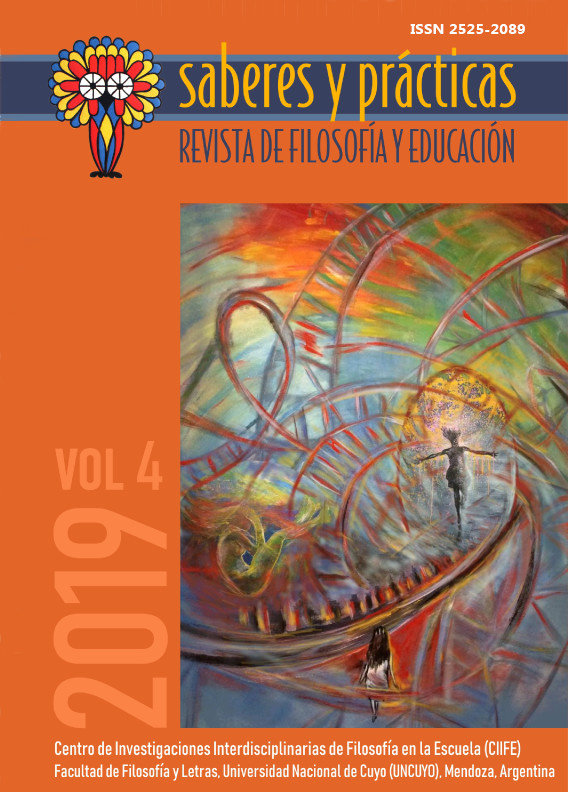Positive cyberfeminism and education
Keywords:
Cyberfeminism, Education, Information and communication technologies, Internet, WomenAbstract
The game is played today in the technological sectors because they are the ones that produce the most added value today, the most demanded and the ones that will determine the agenda of the most powerful companies, institutions and nations in the world. What role do women play in this new world? Will she be able to intervene and lead this unstoppable technological process? This study analyses the evolution of cyberfeminism, the theories behind it and its different aspects. The digital gaps show that the factual powers are transferred to the technological world in which women, at the moment, still have a secondary role. Cyberfeminism rebels against this situation want to empower female with the strengths of technology to lead this new world and eliminate the old barriers and dichotomies of sex, gender, race or economic power. It highlights the role of education to build educational feminism based on technology equality with the contributions of what we have called positive cyberfeminism.
Downloads
References
Anta, José Luis, Peinado, Matilde, García, Almudena. 2012. Cyborg y educación, un debate feminista inconcluso. Barataria. Revista Castellano-Manchega de Ciencias Sociales,14: 85-97.
Bañón, Sonia. 2001. Reflexiones en torno al Ciberfeminismo. Asparkía: Investigación Feminista, 12: 35-51.
Baker, Suzanne, Wentz, Ryan K. y Woods, Madison. 2009. Using virtual worlds in education: Second Life® as an educational tool. Teaching of Psychology, vol. 36, Nº 1: 59-64.
Bourdieu, Pierre. 2000. La dominación masculina. Barcelona: Anagrama.
Braidotti, Rosi. 2003. "Cyberfeminism with a difference". En Futures of critical theory: Dreams of difference. Compilado por Michael Peters, Mark Olssen y Colin Lankshear. Lahnam: Rowman & Littlefield Publishers, INC.
Brock, André, Kvasny, Lynette y Hales, Kayla. 2010. Cultural appropriations of technical capital: Black women, weblogs, and the digital divide. Information, Communication & Society, vol. 13, Nº 7: 1040-1059.
Castaño, Cecilia, Martín, Juan y Martínez, Luis. 2011. La brecha digital de género en España y Europa: medición con indicadores compuestos. Revista Española de Investigaciones Sociológicas (REIS), vol. 136, Nº 1: 127-140.
Castells, Manuel. 2005. La era de la Información. Madrid: Alianza.
Connell, Robert. 1997. La organización social de la masculinidad. Biblioteca Virtual de Ciencias Sociales.
Da Rimini, Francesca, Starrs, Josephine, Pierce, Julianne and Barrat Virginia. 1991. Cyberfeminist Manifesto for the 21st Century. http://www.sysx.org/gashgirl/VNS/TEXT/PINKMANI:HTM
Díaz-Aguado, María José y Carvajal, María Isabel. 2011. Igualdad y prevención de la violencia de género en la adolescencia. Madrid: Ministerio de Sanidad, Política Social e Igualdad.
Donoso, Trinidad, Rubio, María José y Vilà, Ruth. 2019. Factores asociados a la cibervictimización en adolescentes españoles de 12-14 años. Health & Addictions/Salud y Drogas, vol. 19, Nº 1: 11-21.
Galloway, Alex. 1998. A report on cyberfeminism. Sadie Plant relative to VNS Matriz. Switch: Electronic Gender: Art at the Interstice [Online]. http://switch.sjsu.edu/web/v4n1/alex.html (25 Sept. 2003).
García, Almudena. 2007. Cyborgs, mujeres y debates. El ciberfeminismo como teoría crítica. BARATARIA. Revista Castellano-Manchega de Ciencias sociales, 8: 13-26.
García, Antonio y Nuñez, Sonia. 2008. Apuntes obre la identidad virtual de género. Feminismo/s, 11: 41-48.
Gobierno Vasco. 2013. La desigualdad de género y el sexismo en las redes sociales. Una aproximación cualitativa al uso que hacen las redes sociales las y los jóvenes en la CAPV. Gazteiz, Colección Gazteak, nº 7.
Haraway, Donna. 1984. Ciencia, cyborgs y mujeres. La reinvención de la naturaleza. Madrid: Cátedra.
Haraway, Donna. 991. Simions, Cyborgs and Women, New York: Free Association Books.
Haraway, Donna. 2006. A cyborg manifesto: Science, technology, and socialist-feminism in the late 20th century. En The international handbook of virtual learning environments. Compilado por Joel Weiss. Dordrecht: Springer.
Instituto Andaluz de la Mujer. 2005. Violencia y sexismo en los videojuegos. Andalucía: Artefinal Studio.
Linares, Estibaliz. 2016. Giving cyberfeminism and coeducative proposals for a longstanding problem. Paper presentado en la Education and Development Conference, 5 al 7 de marzo, en Bangkok, Tailandia.
Livingstone, Sonia y Helsper, Ellen. 2007. Gradations in digital inclusion: Children, young people and the digital divide. New Media & Society, vol. 9, Nº 4: 671-696.
Merchán, Iker. 2014. The gender digital divide. La brecha digital de género. Bilbao: UPV. EHU.
Observatorio e-Igualdad. 2011. La brecha digital de género en España: Análisis multinivel (España, Europa, Comunidades Autónomas). Madrid: UCM.
Plant, Sadie. 1994. Cybernetic hookers. Adelaide Festival Artist’s Week, reprinted in Australian Network for Art and Technology Newsletter (April-May).
Rai, Gayatri. 2017. Changing perceptions and meaning of Cyberfeminism. International Research Journal of Multidisciplinary Studies, vol. 3, Nº 4: 1-10.
Ryan, Bárbara. 2013. Feminism and the women's movement: Dynamics of change in social movement ideology and activism. Routledge.
Roig, Arturo. 2009. Democracia y utopía. Agora Philosophica. Revista Marplatense de Filosofía, vol. 10, Nº 19-20: 176-210.
Roque, María Ángeles. 2017. Las amazonas, la contribución de un mito griego al imaginario patriarcal. Quaderns de la Mediterrània, 24: 187-193.
Smart, John, Cascio, Jamais y Paffendof, Jerry. 2007. Metaverse roadmap: pathways to the 3D web. http://www.metaverseroadmap.org/overview
Van Deursen, Alexander y Van Dijk, Jan. 2009. Using the Internet: Skill related problems in users’ online behavior. Interacting with Computers, vol. 21, Nº 5-6: 393-402.
Vitores, Anna, & Gil-Juárez, Adriana. 2016. The trouble with ‘women in computing’: a critical examination of the deployment of research on the gender gap in computer science. Journal of Gender Studies, vol. 25, Nº 6: 666-680.
Warburton, Steven. 2009. Second Life in higher education: Assessing the potential for and the barriers to deploying virtual worlds in learning and teaching. British journal of educational technology, vol. 40, Nº 3: 414-426.
Wilding, Faith. 2004. ¿Dónde está el feminismo en el ciberfeminismo? Lectora: Revista de Dones i Textualitat, 10: 141-151.
Zafra, Remedios. 2005. Netianas, N(h)acer mujer en Internet. Madrid: Lengua de trapo.
Zafra, Remedios. 2010. Un cuarto propio conectado. (Ciber) espacio y (auto) gestión del yo. Madrid: Fórcola.
Downloads
Published
How to Cite
Issue
Section
License

This work is licensed under a Creative Commons Attribution-NonCommercial-ShareAlike 2.5 Argentina License.





















